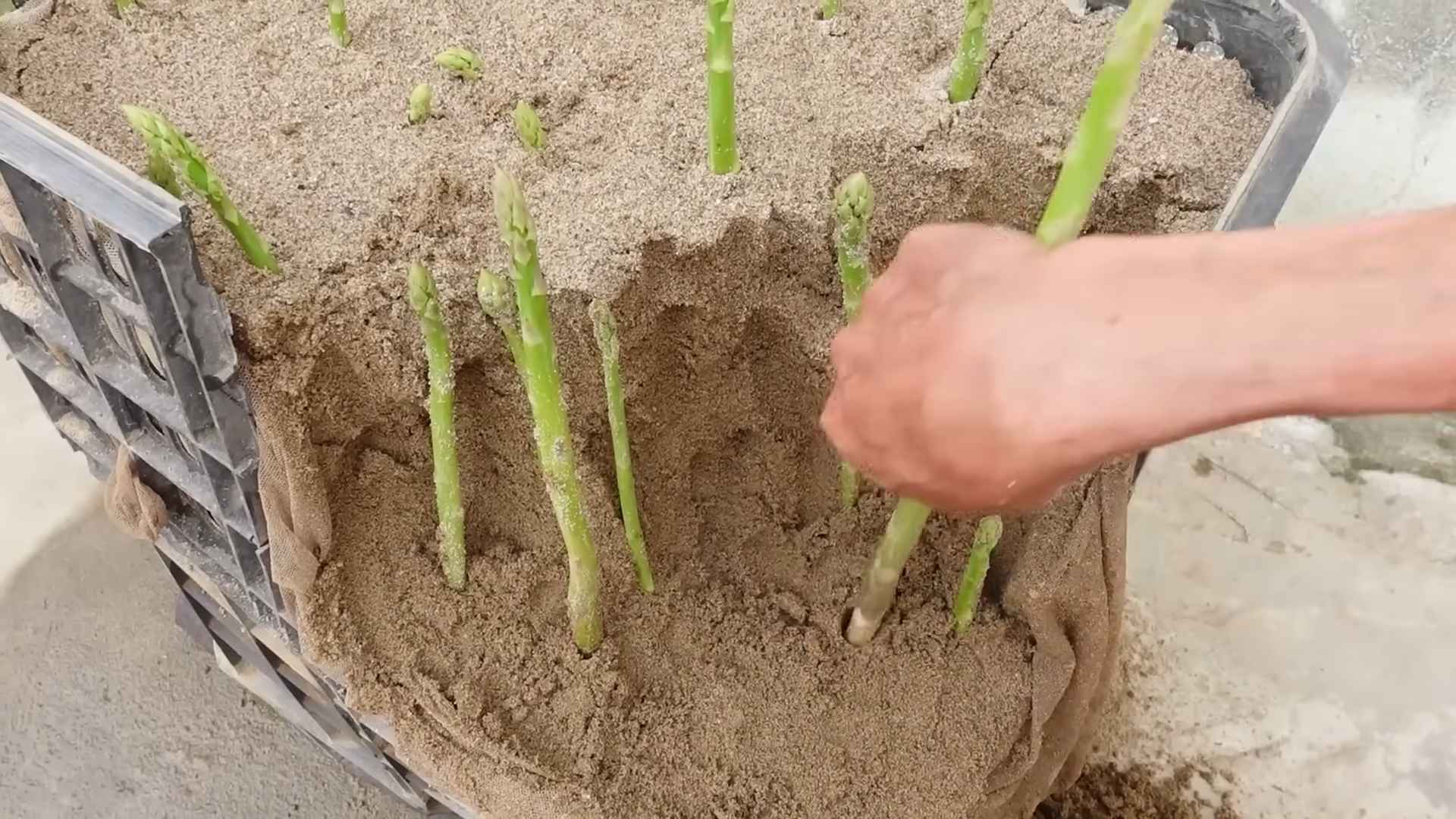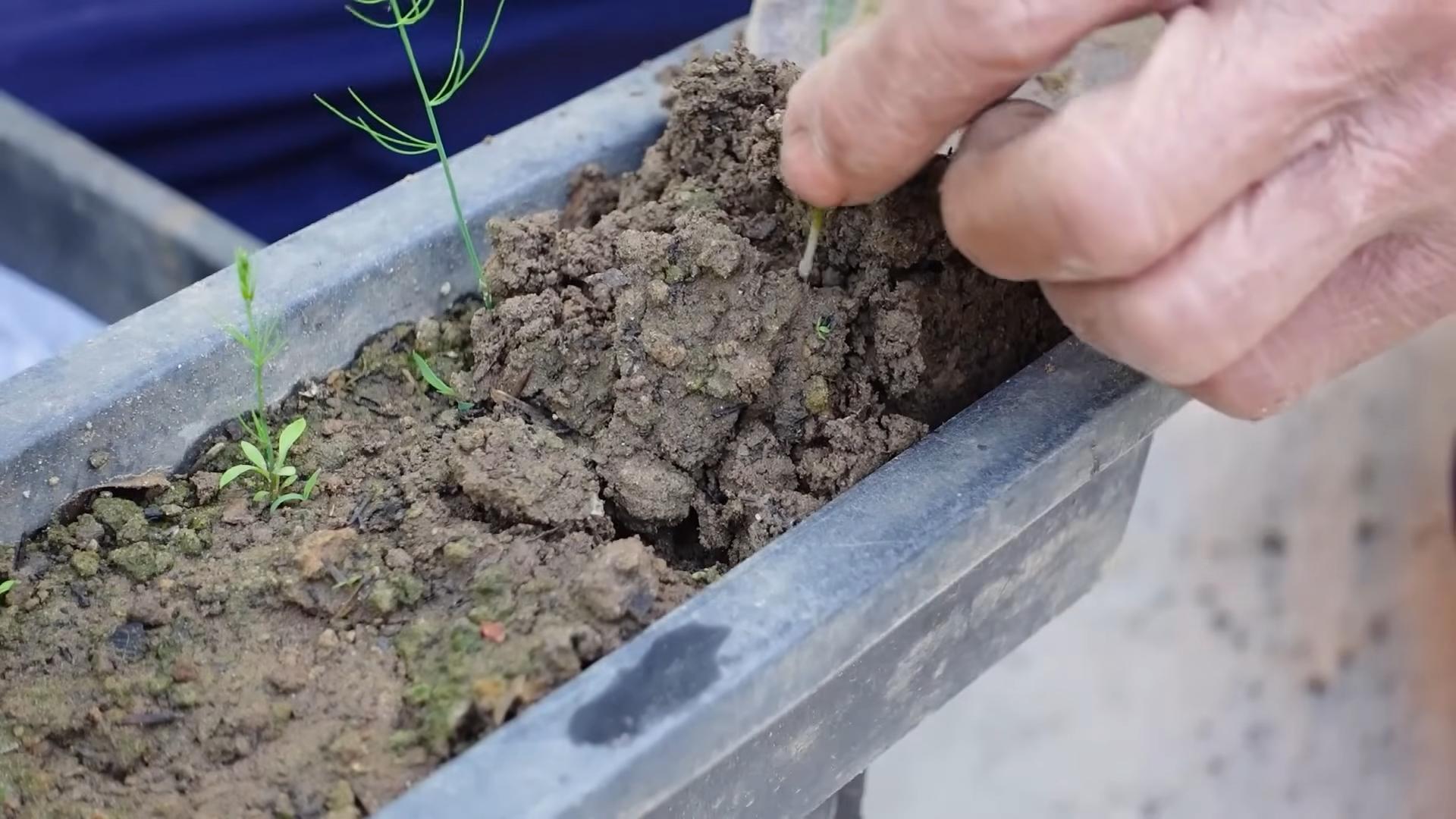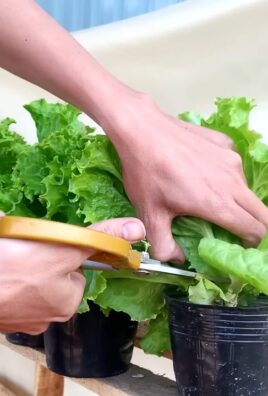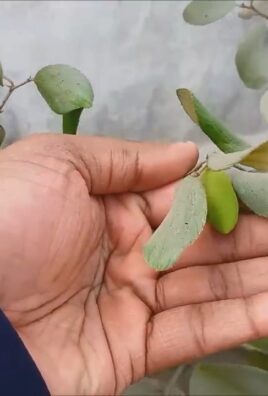Grow Asparagus at Home – sounds like a gourmet dream, right? Imagine stepping into your backyard and harvesting fresh, tender asparagus spears, ready to be steamed, grilled, or tossed into a vibrant spring salad. Forget those bland, imported stalks from the grocery store! This isn’t just about fresh produce; it’s about connecting with nature and enjoying the fruits (or rather, vegetables!) of your labor.
Asparagus has a rich history, dating back to ancient Greece and Rome, where it was prized for its medicinal properties and delicate flavor. Emperors craved it, and it was even depicted in ancient Egyptian frescoes. Today, while we might not be emperors, we can certainly enjoy the royal treatment of homegrown asparagus.
But why should you bother with growing your own? Well, for starters, the taste difference is remarkable. Freshly harvested asparagus is sweeter and more tender than anything you can buy. Plus, you’ll know exactly where your food is coming from, free from pesticides and long-distance transportation. And let’s be honest, there’s a certain satisfaction that comes from nurturing a plant from crown to harvest. Many people think that growing asparagus is difficult, but I’m here to tell you it’s not! With a few simple tricks and DIY hacks, you can grow asparagus at home successfully, even if you have limited space or gardening experience. I’m excited to share my favorite tips and techniques to help you cultivate your own asparagus patch and enjoy years of delicious harvests. Let’s get started!

Growing Asparagus: A Beginner’s Guide to a Bountiful Harvest
Asparagus, that delicious and slightly grassy spring vegetable, might seem intimidating to grow at home. But trust me, with a little patience and the right approach, you can enjoy fresh, homegrown asparagus for years to come! It’s a long-term investment, as asparagus takes a few years to mature, but the reward is well worth the wait. I’m going to walk you through everything you need to know to successfully grow asparagus in your own backyard.
Choosing the Right Asparagus Variety
First things first, let’s talk about varieties. Different asparagus varieties have different characteristics, so choosing the right one for your climate and preferences is crucial. Here are a few popular options:
* Jersey Knight: This is an all-male hybrid, meaning it produces more spears and fewer seeds (which can become weeds). It’s known for its high yield and disease resistance. I’ve had great success with Jersey Knight in my garden.
* Jersey Giant: Another all-male hybrid, Jersey Giant produces large, thick spears. It’s also known for its vigor and disease resistance.
* Purple Passion: This variety is unique because its spears are a beautiful deep purple color. They turn green when cooked, but they have a slightly sweeter flavor than green varieties. It’s a fun one to try if you’re looking for something different!
* Mary Washington: This is an older, heirloom variety that’s still popular for its reliability and flavor. It’s not an all-male variety, so it will produce seeds, but it’s a good choice if you’re looking for a classic asparagus flavor.
Consider your local climate and soil conditions when making your choice. Your local nursery can offer valuable advice on which varieties thrive in your area.
Preparing the Asparagus Bed: Location, Location, Location!
Asparagus is a perennial, meaning it will come back year after year. Therefore, choosing the right location is absolutely essential. Here’s what asparagus needs to thrive:
* Full Sun: Asparagus needs at least 6-8 hours of direct sunlight per day. The more sun, the better!
* Well-Drained Soil: Asparagus hates wet feet! Make sure the soil drains well to prevent root rot. Amend heavy clay soil with plenty of organic matter, like compost or well-rotted manure.
* Sufficient Space: Asparagus plants can get quite large, so give them plenty of room to spread out. Allow at least 18 inches between plants and 4-5 feet between rows.
* Long-Term Commitment: Remember, this is a long-term investment. Choose a location where you won’t be disturbing the asparagus bed for many years to come.
Planting Asparagus Crowns: Getting Started Right
You can grow asparagus from seed, but it’s much easier and faster to start with asparagus crowns. These are one-year-old plants that are ready to be planted directly into the ground. Here’s how to plant them:
1. Prepare the Trench: Dig a trench that is 6-8 inches deep and about 12 inches wide. The length of the trench will depend on how many crowns you are planting.
2. Amend the Soil: Mix plenty of compost or well-rotted manure into the soil at the bottom of the trench. This will provide the asparagus roots with the nutrients they need to get established.
3. Create Mounds: Space the crowns 18 inches apart along the trench. Create small mounds of soil at the bottom of the trench for each crown to sit on.
4. Position the Crowns: Place each crown on top of a mound, spreading the roots out evenly around the mound. Make sure the crown is facing upwards.
5. Cover the Crowns: Gently cover the crowns with about 2 inches of soil. Water thoroughly.
6. Gradual Filling: As the asparagus spears begin to grow, gradually fill in the trench with soil until it is level with the surrounding ground. This will encourage the development of a strong root system.
Caring for Your Asparagus Bed: Watering, Weeding, and Feeding
Once your asparagus crowns are planted, it’s important to provide them with the care they need to thrive. Here’s what you need to do:
* Watering: Water regularly, especially during dry periods. Asparagus needs consistent moisture to produce healthy spears. Aim for about 1 inch of water per week.
* Weeding: Keep the asparagus bed free of weeds. Weeds compete with asparagus for nutrients and water. Hand-pull weeds regularly or use a hoe to cultivate the soil. Be careful not to damage the asparagus roots.
* Fertilizing: Fertilize your asparagus bed in early spring and again after the harvest season. Use a balanced fertilizer, such as 10-10-10, or a fertilizer specifically formulated for vegetables. Follow the instructions on the fertilizer package. I personally prefer using compost tea as a natural fertilizer.
* Mulching: Apply a layer of mulch around the asparagus plants to help retain moisture, suppress weeds, and regulate soil temperature. Organic mulches, such as straw or wood chips, are a good choice.
* Pest and Disease Control: Asparagus is generally resistant to pests and diseases, but keep an eye out for common problems like asparagus beetles and rust. If you notice any problems, take action promptly to prevent them from spreading. Insecticidal soap or neem oil can be effective for controlling asparagus beetles. For rust, ensure good air circulation and consider using a fungicide if necessary.
Harvesting Asparagus: Patience is Key!
This is the hardest part: waiting! You need to be patient and allow your asparagus plants to mature before you start harvesting.
* Year 1: Do not harvest any spears in the first year. This allows the plants to focus on developing a strong root system.
* Year 2: You can harvest a few spears in the second year, but only for a short period of time (about 2 weeks).
* Year 3 and Beyond: In the third year and beyond, you can harvest asparagus for a longer period of time (6-8 weeks).
To harvest asparagus, simply snap off the spears at ground level when they are about 6-8 inches tall. The spears should be thick and firm. Avoid harvesting spears that are thin or spindly, as this can weaken the plants.
Preparing Asparagus for Winter: Dormancy and Protection
As the weather cools down in the fall, the asparagus plants will begin to turn yellow and die back. This is a natural process, and it’s important to prepare the plants for winter.
1. Cut Back the Foliage: Once the foliage has turned completely brown, cut it back to ground level. This will help prevent diseases from overwintering in the garden.
2. Apply Mulch: Apply a thick layer of mulch around the asparagus plants to protect the roots from freezing temperatures.
3. Fertilize (Optional): You can apply a light application of fertilizer in the fall to help replenish the soil nutrients.
Troubleshooting Common Asparagus Problems
Even with the best care, you may encounter some problems when growing asparagus. Here are a few common issues and how to address them:
* Thin Spears: Thin spears can be caused by a variety of factors, including lack of nutrients, insufficient watering, or overcrowding. Make sure you are fertilizing and watering your asparagus plants regularly. If the plants are overcrowded, you may need to thin them out.
* Asparagus Beetles: Asparagus beetles are small, colorful beetles that can damage asparagus spears. Hand-pick the beetles off the plants or use insecticidal soap or neem oil to control them.
* Rust: Rust is a fungal disease that can cause orange or brown spots on asparagus spears. Ensure good air circulation and consider using a fungicide if necessary.
* Crown Rot: Crown rot is a fungal disease that can cause the asparagus crowns to rot. This is often caused by poorly drained soil. Make sure the soil drains well and avoid overwatering.
Enjoying Your Homegrown Asparagus
There’s nothing quite like the taste of fresh, homegrown asparagus. You can enjoy it steamed, roasted, grilled, or added to salads and other dishes. Asparagus is a versatile vegetable that can be used in a variety of ways.
Growing asparagus at home is a rewarding experience that will provide you with fresh, delicious vegetables for many years to come. With a little patience and the right care, you can enjoy a bountiful harvest of asparagus every spring. Good luck, and happy gardening!

Conclusion
So, there you have it! Growing asparagus at home isn’t just a gardening project; it’s an investment in years of delicious, healthy harvests. Forget those limp, expensive spears from the grocery store. Imagine stepping into your backyard and snipping fresh, vibrant asparagus, bursting with flavor and nutrients. This DIY trick transforms your garden into a sustainable source of culinary delight.
Why is this a must-try? Because it empowers you to control the quality and freshness of your food. You know exactly what goes into your asparagus patch – no harmful pesticides or herbicides, just good old-fashioned care and attention. Plus, the taste difference is undeniable. Homegrown asparagus is sweeter, more tender, and simply more satisfying than anything you can buy.
But the benefits extend beyond the plate. Gardening is a fantastic way to relieve stress, connect with nature, and get some exercise. Tending to your asparagus bed can be a meditative and rewarding experience. And let’s not forget the satisfaction of sharing your homegrown bounty with friends and family.
Ready to take your asparagus game to the next level? Consider these variations:
* Vertical Asparagus Growing: If you’re short on space, explore vertical gardening techniques. You can train your asparagus ferns to climb a trellis or fence, creating a beautiful and productive living wall.
* Companion Planting: Enhance your asparagus patch by planting beneficial companion plants like tomatoes, basil, and parsley. These plants can help deter pests, improve soil health, and even enhance the flavor of your asparagus.
* Different Varieties: Experiment with different asparagus varieties to find your favorite. ‘Jersey Knight’ is a popular choice for its high yield and disease resistance, while ‘Purple Passion’ offers a unique color and sweeter flavor.
* Container Gardening: While asparagus prefers in-ground planting, it can be grown in large containers with proper drainage and nutrient-rich soil. This is a great option for those with limited garden space or poor soil conditions.
Don’t be intimidated by the initial investment of time and effort. Growing asparagus is a long-term commitment, but the rewards are well worth it. With a little patience and care, you’ll be enjoying fresh, homegrown asparagus for years to come.
We encourage you to try this DIY trick and experience the joy of growing your own asparagus. Share your experiences, tips, and photos in the comments below! We’d love to hear about your successes (and even your challenges) as you embark on this delicious gardening adventure. Let’s build a community of asparagus enthusiasts and inspire others to grow their own food. Growing asparagus at home is a rewarding experience that connects you to nature and provides you with fresh, healthy food.
Frequently Asked Questions (FAQ)
How long does it take to grow asparagus from seed?
Growing asparagus from seed is a patient endeavor. It typically takes around three years from seed to harvestable spears. The first year is focused on developing a strong root system. You’ll need to start the seeds indoors in late winter or early spring, transplant them to a nursery bed, and then transplant the crowns to their permanent location the following spring. While starting from seed requires more time, it’s a more economical option than purchasing established crowns.
What kind of soil is best for growing asparagus?
Asparagus thrives in well-drained, fertile soil with a slightly acidic to neutral pH (6.0 to 7.0). Before planting, amend the soil with plenty of organic matter, such as compost or well-rotted manure. This will improve drainage, aeration, and nutrient content. Asparagus prefers sandy loam soil, but it can tolerate other soil types as long as they are well-drained. Avoid heavy clay soils, as they can become waterlogged and lead to root rot.
How often should I water my asparagus plants?
Asparagus needs consistent moisture, especially during the growing season. Water deeply and regularly, especially during dry spells. Aim for about 1-2 inches of water per week. Avoid overwatering, as this can lead to root rot. Mulching around the plants can help retain moisture and suppress weeds. During the dormant season (fall and winter), reduce watering frequency.
When is the best time to harvest asparagus?
Harvesting typically begins in the spring, about two to three years after planting crowns. The harvest period usually lasts for 6-8 weeks. Spears are ready to harvest when they are about 6-8 inches tall and the tips are still tightly closed. Snap or cut the spears off at ground level. As the plants mature, you can extend the harvest period. Stop harvesting when the spears become thin and spindly, as this indicates that the plants need to replenish their energy reserves.
How do I fertilize my asparagus plants?
Asparagus is a heavy feeder and benefits from regular fertilization. In early spring, before the spears emerge, apply a balanced fertilizer (e.g., 10-10-10) to the soil around the plants. You can also side-dress with compost or well-rotted manure. Avoid over-fertilizing, as this can lead to excessive fern growth
So, there you have it! Growing asparagus at home isn’t just a gardening project; it’s an investment in years of delicious, healthy harvests. Forget those limp, expensive spears from the grocery store. Imagine stepping into your backyard and snipping fresh, vibrant asparagus, bursting with flavor and nutrients. This DIY trick transforms your garden into a sustainable source of culinary delight.
Why is this a must-try? Because it empowers you to control the quality and freshness of your food. You know exactly what goes into your asparagus patch – no harmful pesticides or herbicides, just good old-fashioned care and attention. Plus, the taste difference is undeniable. Homegrown asparagus is sweeter, more tender, and simply more satisfying than anything you can buy.
But the benefits extend beyond the plate. Gardening is a fantastic way to relieve stress, connect with nature, and get some exercise. Tending to your asparagus bed can be a meditative and rewarding experience. And let’s not forget the satisfaction of sharing your homegrown bounty with friends and family.
Ready to take your asparagus game to the next level? Consider these variations:
* Vertical Asparagus Growing: If you’re short on space, explore vertical gardening techniques. You can train your asparagus ferns to climb a trellis or fence, creating a beautiful and productive living wall.
* Companion Planting: Enhance your asparagus patch by planting beneficial companion plants like tomatoes, basil, and parsley. These plants can help deter pests, improve soil health, and even enhance the flavor of your asparagus.
* Different Varieties: Experiment with different asparagus varieties to find your favorite. ‘Jersey Knight’ is a popular choice for its high yield and disease resistance, while ‘Purple Passion’ offers a unique color and sweeter flavor.
* Container Gardening: While asparagus prefers in-ground planting, it can be grown in large containers with proper drainage and nutrient-rich soil. This is a great option for those with limited garden space or poor soil conditions.
Don’t be intimidated by the initial investment of time and effort. Growing asparagus is a long-term commitment, but the rewards are well worth it. With a little patience and care, you’ll be enjoying fresh, homegrown asparagus for years to come.
We encourage you to try this DIY trick and experience the joy of growing your own asparagus. Share your experiences, tips, and photos in the comments below! We’d love to hear about your successes (and even your challenges) as you embark on this delicious gardening adventure. Let’s build a community of asparagus enthusiasts and inspire others to grow their own food. Growing asparagus at home is a rewarding experience that connects you to nature and provides you with fresh, healthy food.
Frequently Asked Questions (FAQ)
How long does it take to grow asparagus from seed?
Growing asparagus from seed is a patient endeavor. It typically takes around three years from seed to harvestable spears. The first year is focused on developing a strong root system. You’ll need to start the seeds indoors in late winter or early spring, transplant them to a nursery bed, and then transplant the crowns to their permanent location the following spring. While starting from seed requires more time, it’s a more economical option than purchasing established crowns.
What kind of soil is best for growing asparagus?
Asparagus thrives in well-drained, fertile soil with a slightly acidic to neutral pH (6.0 to 7.0). Before planting, amend the soil with plenty of organic matter, such as compost or well-rotted manure. This will improve drainage, aeration, and nutrient content. Asparagus prefers sandy loam soil, but it can tolerate other soil types as long as they are well-drained. Avoid heavy clay soils, as they can become waterlogged and lead to root rot.
How often should I water my asparagus plants?
Asparagus needs consistent moisture, especially during the growing season. Water deeply and regularly, especially during dry spells. Aim for about 1-2 inches of water per week. Avoid overwatering, as this can lead to root rot. Mulching around the plants can help retain moisture and suppress weeds. During the dormant season (fall and winter), reduce watering frequency.
When is the best time to harvest asparagus?
Harvesting typically begins in the spring, about two to three years after planting crowns. The harvest period usually lasts for 6-8 weeks. Spears are ready to harvest when they are about 6-8 inches tall and the tips are still tightly closed. Snap or cut the spears off at ground level. As the plants mature, you can extend the harvest period. Stop harvesting when the spears become thin and spindly, as this indicates that the plants need to replenish their energy reserves.
How do I fertilize my asparagus plants?
Asparagus is a heavy feeder and benefits from regular fertilization. In early spring, before the spears emerge, apply a balanced fertilizer (e.g., 10-10-10) to the soil around the plants. You can also side-dress with compost or well-rotted manure. Avoid over-fertilizing, as this can lead to excessive fern growth at the expense of spear production. A soil test can help determine the specific nutrient needs of your asparagus plants.
What are some common pests and diseases that affect asparagus?
Asparagus beetles are a common pest that can damage the spears and ferns. Handpicking the beetles or using insecticidal soap can help control infestations. Asparagus rust is a fungal disease that can cause orange pustules on the ferns. Planting rust-resistant varieties and ensuring good air circulation can help prevent this disease. Other potential problems include crown rot and Fusarium wilt, which are often caused by poor drainage and soil conditions.
How do I care for asparagus ferns after the harvest?
After the harvest period, allow the asparagus ferns to grow and mature. These ferns are essential for replenishing the plant’s energy reserves for the following year’s harvest. Keep the ferns well-watered and fertilized. In the fall, after the ferns have turned brown and died back, cut them down to ground level. This will help prevent the spread of diseases and pests.
Can I grow asparagus in containers?
Yes, you can grow asparagus in containers, but it requires a large container (at least 18 inches in diameter and depth) with good drainage. Use a high-quality potting mix and amend it with compost or other organic matter. Water regularly and fertilize as needed. Container-grown asparagus may not be as productive as in-ground plants, but it’s a viable option for those with limited space.
How long will my asparagus plants last?
With proper care, asparagus plants can live for 15-20 years or even longer. This makes growing asparagus a long-term investment in your garden and your health. Regular fertilization, proper watering, and pest and disease control are essential for maintaining the health and productivity of your asparagus plants.





Leave a Comment